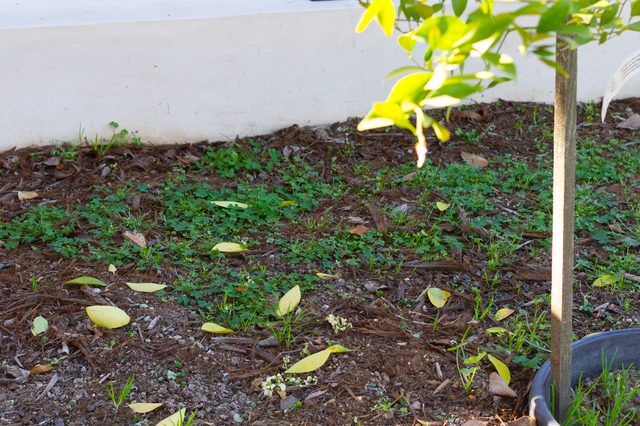Bulbs
Flower Basics
Flower Beds & Specialty Gardens
Flower Garden
Garden Furniture
Garden Gnomes
Garden Seeds
Garden Sheds
Garden Statues
Garden Tools & Supplies
Gardening Basics
Green & Organic
Groundcovers & Vines
Growing Annuals
Growing Basil
Growing Beans
Growing Berries
Growing Blueberries
Growing Cactus
Growing Corn
Growing Cotton
Growing Edibles
Growing Flowers
Growing Garlic
Growing Grapes
Growing Grass
Growing Herbs
Growing Jasmine
Growing Mint
Growing Mushrooms
Orchids
Growing Peanuts
Growing Perennials
Growing Plants
Growing Rosemary
Growing Roses
Growing Strawberries
Growing Sunflowers
Growing Thyme
Growing Tomatoes
Growing Tulips
Growing Vegetables
Herb Basics
Herb Garden
Indoor Growing
Landscaping Basics
Landscaping Patios
Landscaping Plants
Landscaping Shrubs
Landscaping Trees
Landscaping Walks & Pathways
Lawn Basics
Lawn Maintenance
Lawn Mowers
Lawn Ornaments
Lawn Planting
Lawn Tools
Outdoor Growing
Overall Landscape Planning
Pests, Weeds & Problems
Plant Basics
Rock Garden
Rose Garden
Shrubs
Soil
Specialty Gardens
Trees
Vegetable Garden
Yard Maintenance
How to Get Rid of Clover in the Lawn Organically
How to Get Rid of Clover in the Lawn Organically. Clovers might make fun decorations for St. Patrick's Day, but having them spread unabated across your lawn might make you feel unlucky. Although clovers (Melilotus spp., Trifolium spp., Medicago spp.) have several benefits, they also spread aggressively, which leads to uneven lawn growth, color...
Clovers might make fun decorations for St. Patrick's Day, but having them spread unabated across your lawn might make you feel unlucky. Although clovers (Melilotus spp., Trifolium spp., Medicago spp.) have several benefits, they also spread aggressively, which leads to uneven lawn growth, color and texture. The mature seeds of some clover species cling to clothing or pet fur and make walking barefoot across the lawn a potentially painful feat. Try organic methods to get rid of clover without using harsh chemicals.
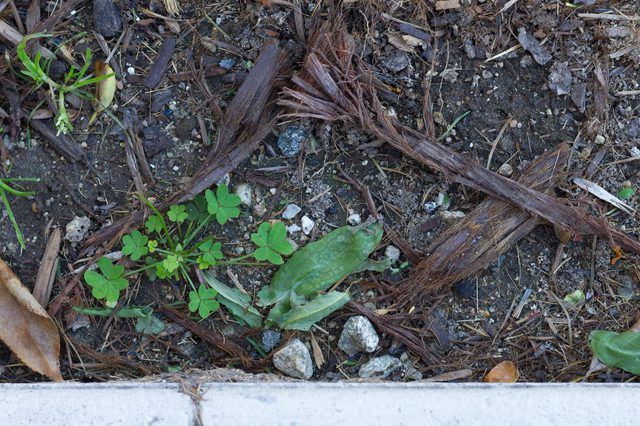
Yanking out unwanted clovers by hand works well in small lawns with few weeds, but you must remove the whole plant before it matures enough to flower and produce seeds. Clover seeds have hard coatings that allow them to survive in the soil and germinate several years later, so hand-pulling weeds while they're young helps prevent future clover infestations. Wait until after a rain or moisten the soil beforehand to make hand-pulling easier. Place pulled clover plants into a covered trash can. Don't toss the weeds into your compost heap or you risk spreading clover seeds to other parts of your yard.
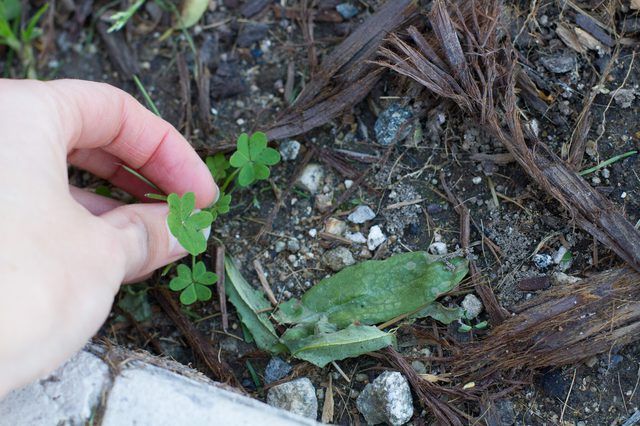
Organic herbicidal soap products can help control large patches of clover. The soaps contain ammoniated soap of fatty acids, which work by penetrating plant tissues, disrupting cell structures and causing dehydration. Carefully read and follow the manufacturer's directions. One product recommends mixing 26 ounces of soap concentrate in 1 gallon of water in a handheld sprayer. Thoroughly cover the weeds until they glisten with moisture, but take care not to get the solution on the lawn grass or ornamental plants. The non-selective herbicide will kill any plant it touches.
You should start seeing results within two to 48 hours of application, and spraying on a hot, dry day helps speed the weed-killing process along. Repeat applications every two to three weeks if you still spot clover in the treated area. Soap solutions are environmentally friendly and nontoxic to people and pets, but can still cause eye and skin irritation on contact. Wear eye protection, rubber gloves, protective clothing and a face mask to reduce your risk of exposure.
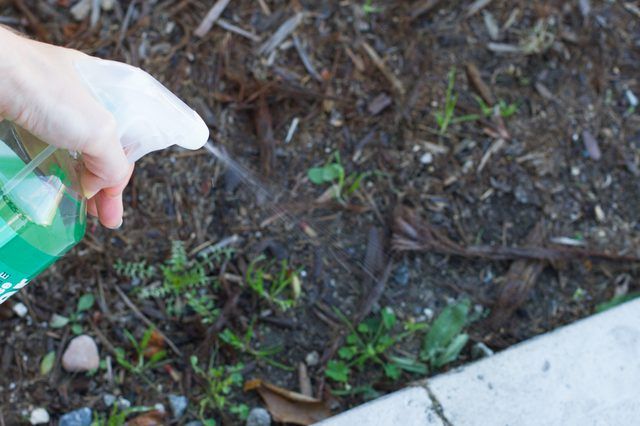
Clover growth indicates your lawn suffers from low levels of nitrogen. Corn gluten meal works well as a pre-emergent herbicide and it also contains 10 percent nitrogen to promote healthy grass growth. Use a spreader to apply 20 pounds of corn gluten meal granules for every 1,000 square feet of lawn, and then lightly water the meal into the soil so it can work its way down to the seeds. Unlike traditional herbicides, corn gluten meal allows the seeds to germinate, but the clover plant roots won't form correctly and the seedlings quickly die. For optimal results, make one application in spring after the last frost and another one in fall before the seeds germinate, which they will when soil temperatures fall to between 50 and 60 degrees Fahrenheit. Corn gluten meal also kills grass seeds, so don't use it if you're reseeding your lawn.
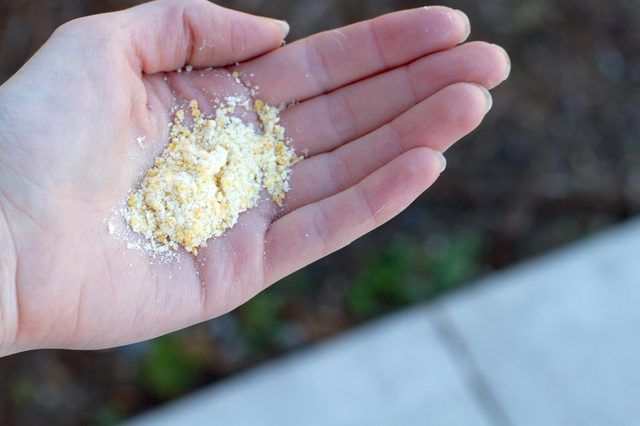
Applying a 4- to 6-inch layer of organic mulching material to clover-infested lawn areas will get rid of the weeds, but it may also kill your lawn and will certainly make the lawn stop growing temporarily. Wood chips, pine needles, dried grass clippings, shredded leaves, straw and compost all effectively block the sunlight clover seeds need to germinate and grow. If you choose this method, you'll probably need to reseed the lawn or repair patches of it.
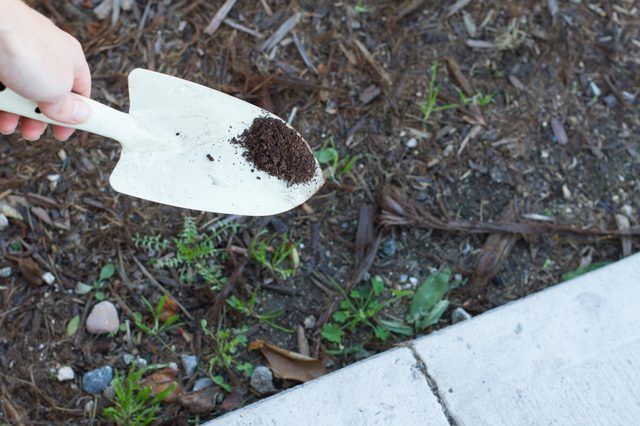
Consider a few things before you launch an all-out war on clover plants. Clover could be considered nature's way of making your lawn healthier. The plants have a symbiotic relationship with a bacterium that allows clover to convert atmospheric nitrogen into a usable form. When clover roots die and rot, they release nitrogen into the soil for other plants to use. Many companies include annual shamrock clover (Trifolium dubium) and perennial white clover (Trifolium repens, U.S. Department of Agriculture plant hardiness zones 4 through 8) in lawn seed mixtures so you won't have to fertilize your lawn as frequently. White clover also spreads quickly enough to crowd out lurking broad-leaf weeds. Drought-resistant clovers can even keep their deep green color through hot, dry summers. The blooms attract pollinating and beneficial insects. If you're not allergic to bee venom, use clovers to attract honeybees, butterflies, ladybugs and lacewings to your yard.
